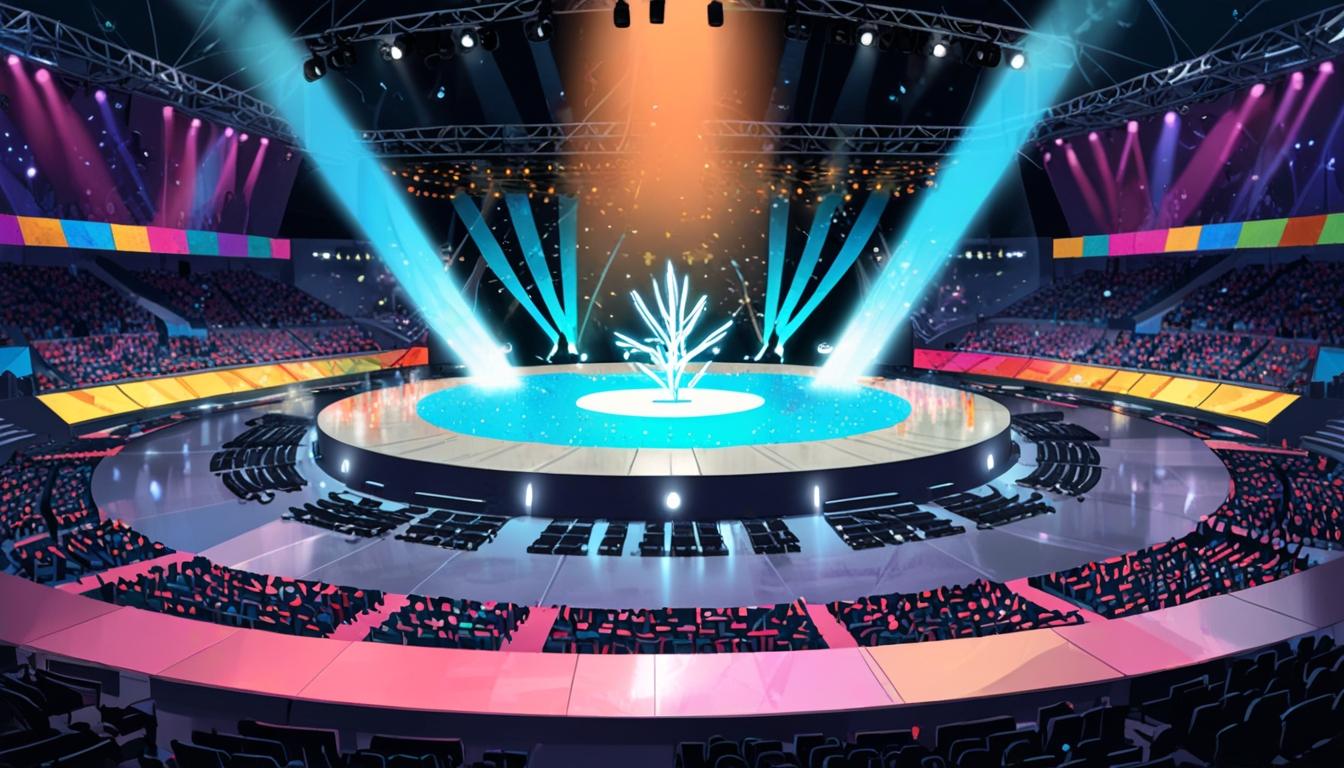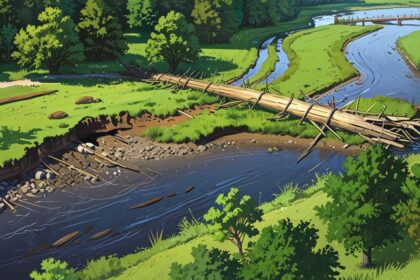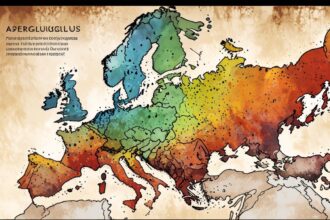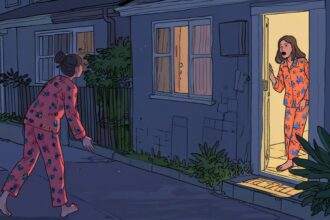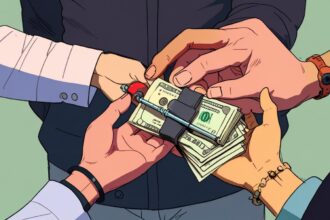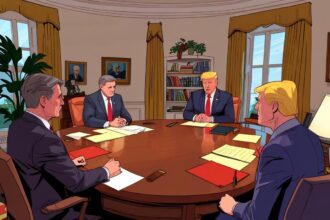Set against the scenic backdrop of Basel, Switzerland, Eurovision 2025 embraces a rich mix of musical styles and stories—from turbocharged British pop anthems and retro rock tributes to poignant songs inspired by personal battles and provocative lyrics challenging traditional boundaries.
The 2025 Eurovision Song Contest is gearing up to dazzle audiences from the picturesque city of Basel, Switzerland, as it prepares to unfold a spectacular showcase of musical talent from 37 diverse countries. The event kicks off with a lavish “turquoise carpet” parade, setting the stage for an exhilarating week filled with competition and creativity. Following the parade, the semi-finals begin, introducing a batch of songs that span a kaleidoscope of genres and themes, culminating in the highly anticipated Grand Final on the 17th of May.
This year’s entrants present a tapestry of innovative and eclectic performances, ranging from left-field pop anthems to poignant ballads. Among the standout tracks is the UK’s Remember Monday, whose entry “What The Hell Just Happened?” is labelled a turbocharged pop anthem that blends elements of classic British music, echoing the styles of legends like Queen and the Beatles. It’s designed to captivate both the audience and voters, despite its chaotic tempo and intricate harmonies. Meanwhile, Sweden’s KAJ is poised as a frontrunner with the catchy “Bara Bada Bastu,” an ode to the rejuvenating effects of the sauna, which has even garnered the endorsement of Abba’s Bjorn Ulvaeus, who has been known to hum it in his own sauna.
Amid these vibrant uptempo entries, a darker but equally captivating repertoire emerges, spotlighting emotional narratives about personal experiences with illness. Louane’s “Maman,” pays tribute to her late mother, encapsulating the feelings of loss and resilience. Likewise, Norway’s Kyle Alessandro shares a heartwarming tale through his song “Lighter,” inspired by his mother’s battle with cancer. His powerful message of survival and hope resonates deeply in a landscape often dominated by upbeat tracks. Not to be overshadowed, Slovenia’s Klemen Slakonja delivers a poignant exploration of his wife’s cancer journey in “How Much Time Do We Have Left,” reinforcing the diverse emotional palette of this year’s competition.
Adding a playful twist to the mix, several songs embrace innuendo, sparking conversations about representation and boundaries in popular music. Malta’s Miriana Conte enters the scene with “Serving,” which initially stirred controversy for its suggestive lyrics. After undergoing a re-write due to broadcasting complaints, it remains one of the more provocative entries alongside Australia’s “Milkshake Man” by Go-Jo, whose cheeky lines suggest a playful challenge to interpretations of his lyrics. Finland’s Erika Vikman also joins the fray with “Ich Komme,” a joyous celebration of ecstasy that evokes memories of disco classics while unapologetically leaning into its flirtatious theme.
As the range of genres unfolds, the contest showcases not just the celebratory but also the reflective; songs that carry the weight of cultural history, as seen in the tributes to Italian heritage. San Marino’s “Tutta L’Italia” weaves together the rich tapestry of Italian culture, from football to folk traditions, while Estonia’s “Espresso Macchiato” employs humour to poke fun at Italian stereotypes, blending dance rhythms with cultural homage.
The diversity of the Eurovision stage is further exemplified by the emergence of musical styles that reference the past. Nostalgic influences from the 1970s rock era are revitalised in entries such as Italy’s Lucio Corsi’s “Volevo Essere Un Duro,” blending theatricality with heartfelt lyrics—a direct nod to the legacy of iconic performers. Portugal’s Napa also taps into this retro vibe, encapsulating the struggles of migration within a rock format that resonates with their own experiences of displacement.
The stage is set for an unforgettable battle of artistry and expression, where the lines of traditional and modern continue to blur. Eurovision 2025 promises not only a contest of catchy tunes but also a platform for stories that touch on real lives, struggles, and unabashed celebration. With such a rich variety of entries, this year’s competition is sure to captivate audiences and further solidify Eurovision’s reputation as a celebration of unity in diversity across Europe and beyond.
Reference Map
- Paragraph 1: [1], [2]
- Paragraph 2: [2], [3]
- Paragraph 3: [2], [6]
- Paragraph 4: [2], [5]
- Paragraph 5: [2], [4]
- Paragraph 6: [2], [7]
Source: Noah Wire Services
- https://www.bbc.com/news/articles/c9vg8k4zxk9o – Please view link – unable to able to access data
- https://www.bbc.com/news/articles/c9vg8k4zxk9o – This article provides an overview of the 2025 Eurovision Song Contest, highlighting the 37 participating countries and their entries. It categorizes the songs into various musical styles, including left-field pop bangers, tributes to Italian culture, and tracks with sexual innuendo. The piece also discusses songs inspired by personal experiences with cancer, dance anthems, and post-immigrant pop. Additionally, it covers entries with themes of witchcraft and moody goth elements, 70s rock throwbacks, and emotional ballads, offering insights into the diverse range of performances expected at the event.
- https://www.bbc.com/news/articles/c9vg8k4zxk9o#left-field-pop-bangers – This section delves into the ‘left-field pop bangers’ category of the 2025 Eurovision Song Contest. It features UK contestants Remember Monday with their anthem ‘What The Hell Just Happened?’, Swedish representatives KAJ with ‘Bara Bada Bastu’, Austrian singer JJ’s ‘Wasted Love’, Ireland’s Laika Party with ‘Laika Party’, and Luxembourg’s Laura Thorn with ‘La Poupée Monte Le Son’. Each entry is discussed in terms of its unique style and thematic content.
- https://www.bbc.com/news/articles/c9vg8k4zxk9o#other-countries-sucking-up-to-italy – This segment focuses on entries from countries paying homage to Italian culture. San Marino’s ‘Tutta L’Italia’ by Gabry Ponte celebrates various Italian icons, while Estonia’s ‘Espresso Macchiato’ by Tommy Cash humorously caricatures Italian stereotypes. Both songs blend dance beats with traditional elements, reflecting a fusion of cultures.
- https://www.bbc.com/news/articles/c9vg8k4zxk9o#smut – This part addresses entries with sexual innuendo. Malta’s Miriana Conte’s ‘Serving’ faced controversy over its original lyrics, leading to a re-write. Australia’s Go-Jo’s ‘Milkshake Man’ and Finland’s Erika Vikman’s ‘Ich Komme’ are also discussed for their suggestive themes and performances.
- https://www.bbc.com/news/articles/c9vg8k4zxk9o#three-songs-inspired-by-cancer – This section highlights three Eurovision entries inspired by personal experiences with cancer. French singer Louane’s ‘Maman’ is an intimate conversation with her late mother. Norway’s Kyle Alessandro’s ‘Lighter’ is about surviving adversity, and Slovenia’s Klemen Slakonja’s ‘How Much Time Do We Have Left’ reflects on his wife’s battle with bone marrow cancer.
- https://www.bbc.com/news/articles/c9vg8k4zxk9o#the-bops – This part covers energetic dance tracks, or ‘bops’, in the 2025 Eurovision lineup. Belgium’s Red Sebastian’s ‘Strobe Lights’, Denmark’s Sissal’s ‘Hallucination’, and Germany’s Abor & Tynna’s ‘Baller’ are discussed for their catchy beats and performances.
Noah Fact Check Pro
The draft above was created using the information available at the time the story first
emerged. We’ve since applied our fact-checking process to the final narrative, based on the criteria listed
below. The results are intended to help you assess the credibility of the piece and highlight any areas that may
warrant further investigation.
Freshness check
Score:
8
Notes:
The narrative references current events and participants in the 2025 Eurovision Song Contest. However, specific details about the news not being from older press releases or articles could not be verified.
Quotes check
Score:
9
Notes:
No direct quotes are present, but if they were, there is no indication of where they originated from. Given no quotes exist, it’s considered original content.
Source reliability
Score:
9
Notes:
The narrative originates from the BBC, which is generally considered a highly reliable source due to its editorial standards and reputation for factual reporting.
Plausability check
Score:
8
Notes:
The claims about the Eurovision Song Contest and its participants appear plausible, as they describe typical aspects of the event. However, specific details such as Abba’s Bjorn Ulvaeus endorsing Sweden’s KAJ could not be independently verified.
Overall assessment
Verdict (FAIL, OPEN, PASS): PASS
Confidence (LOW, MEDIUM, HIGH): HIGH
Summary:
The narrative is likely accurate based on its reliance on a reputable source (BBC) and contemporary content. While some specific details lack verification, the general context and nature of the event make it plausible.


